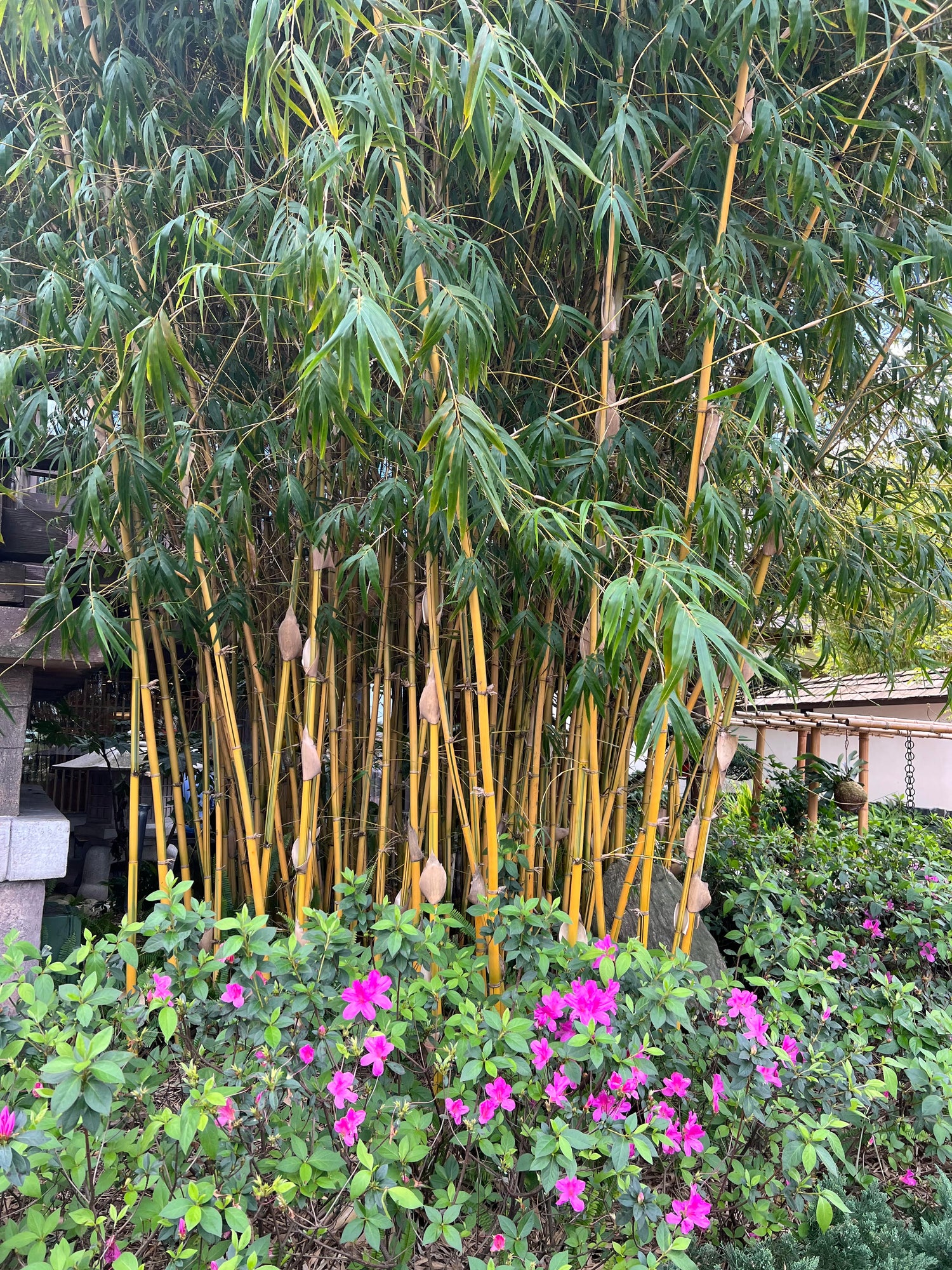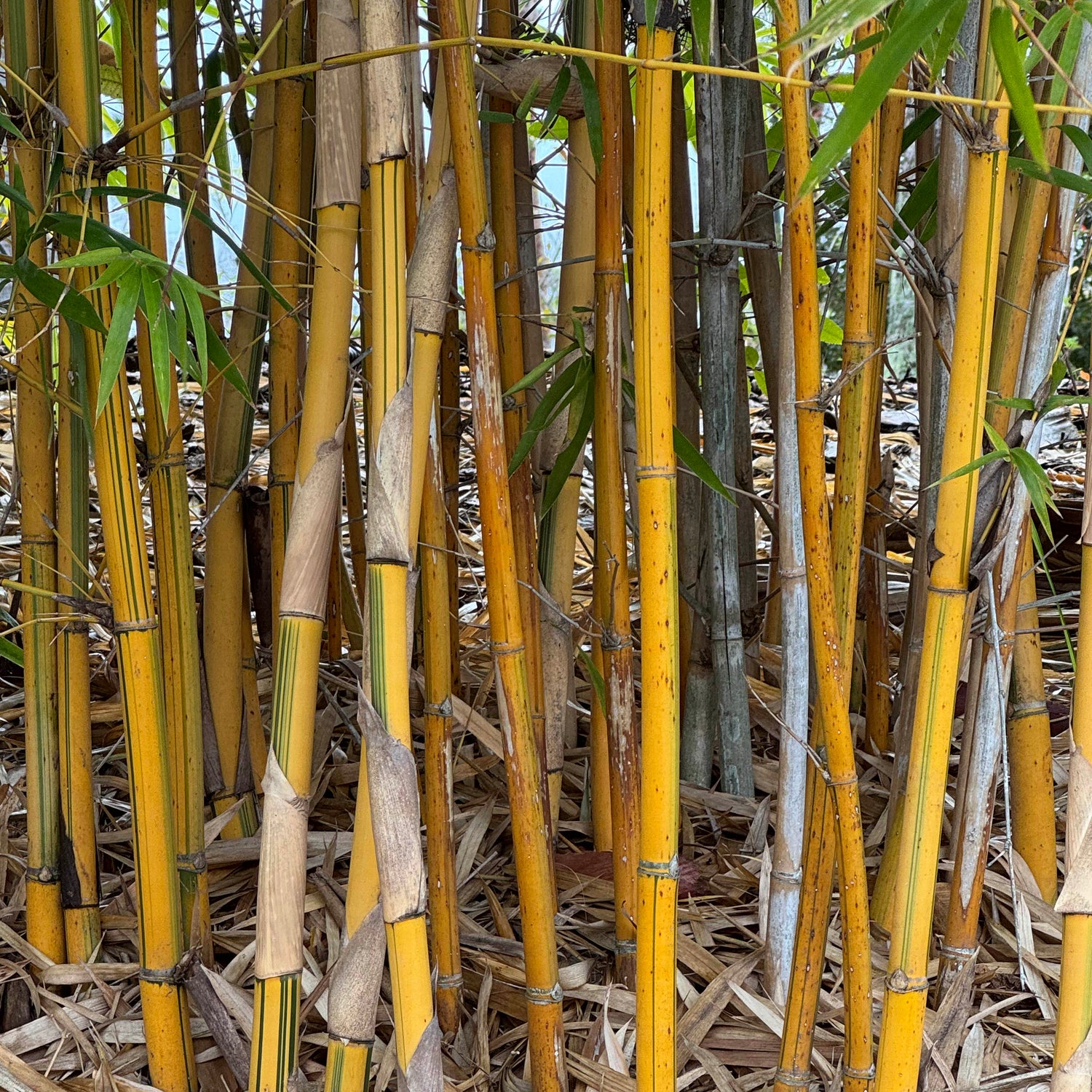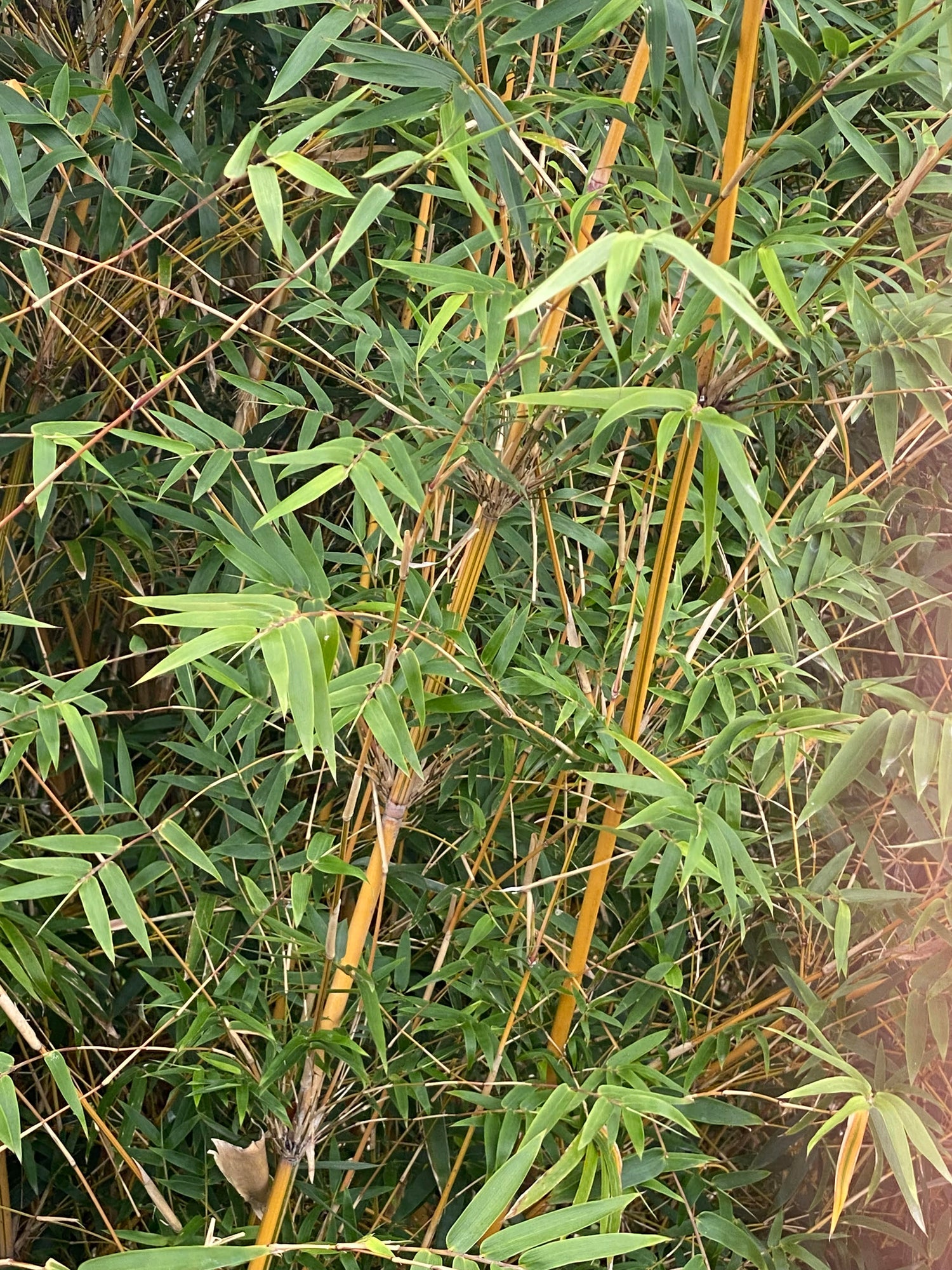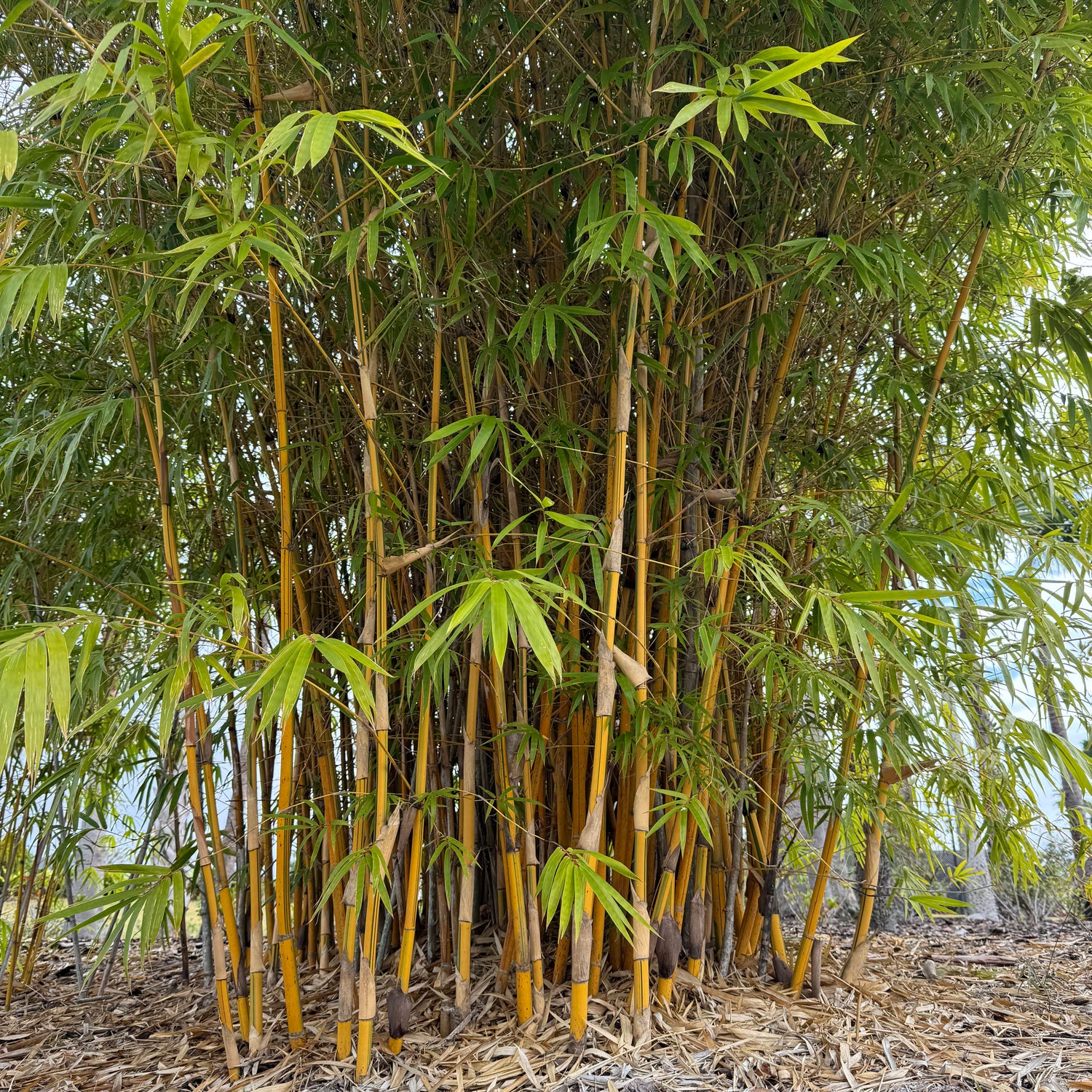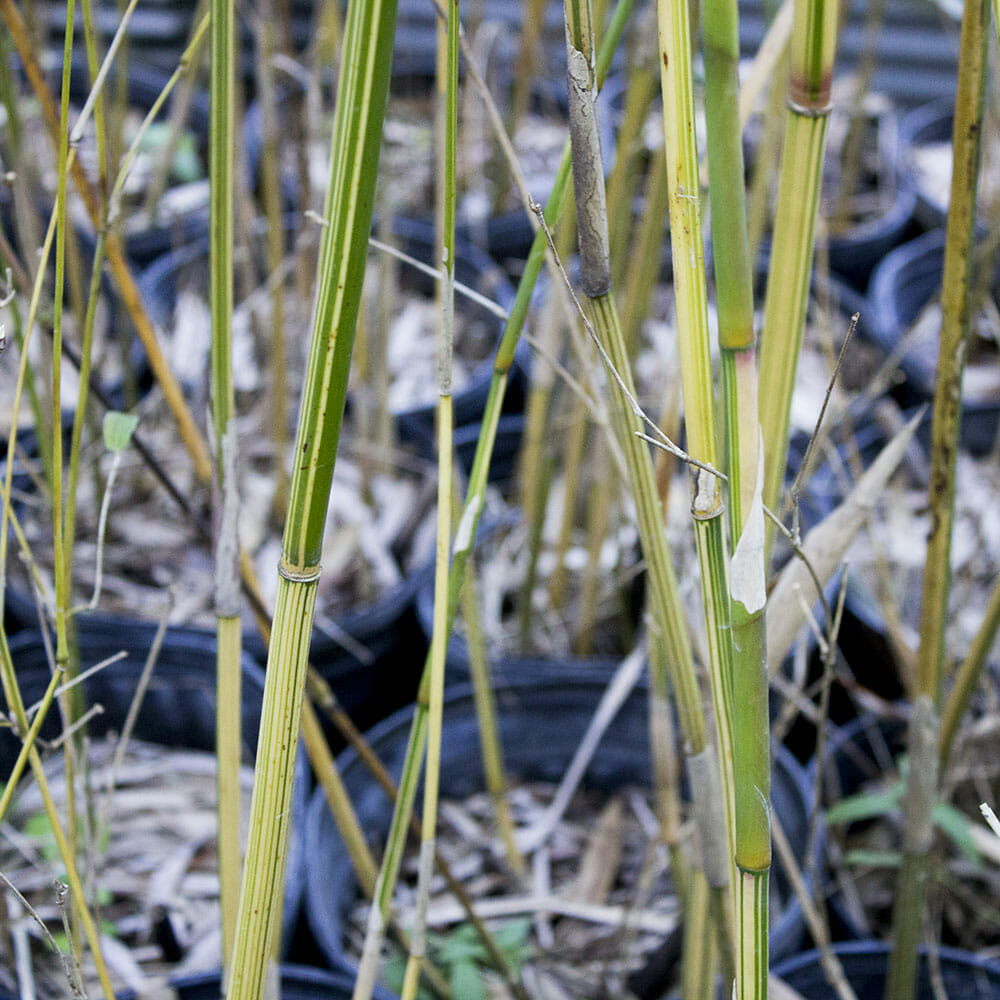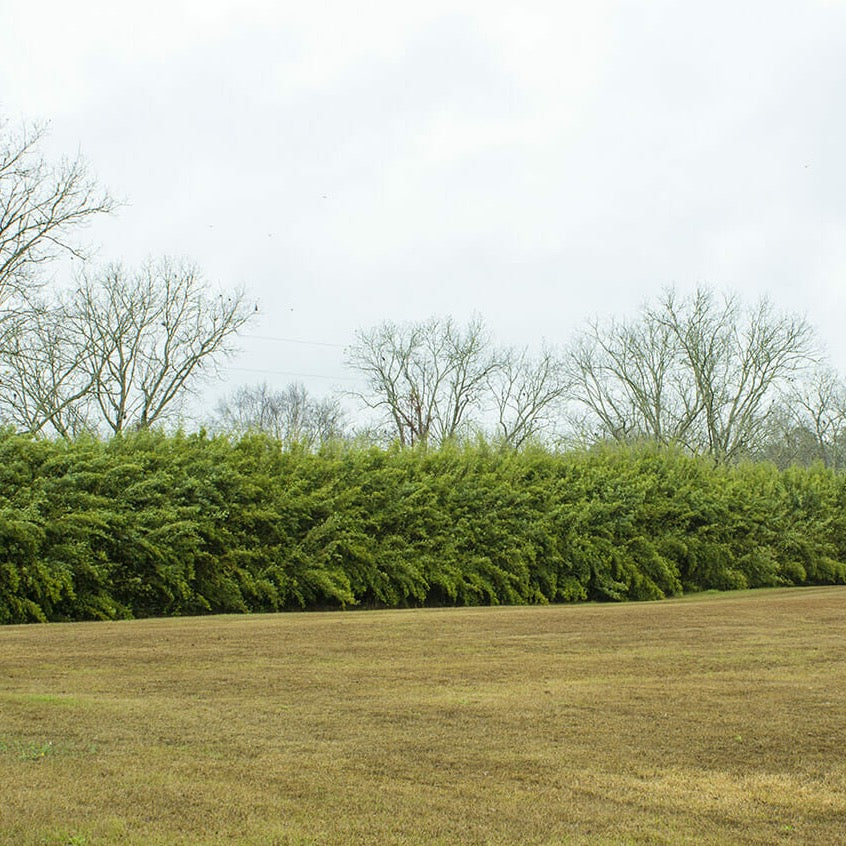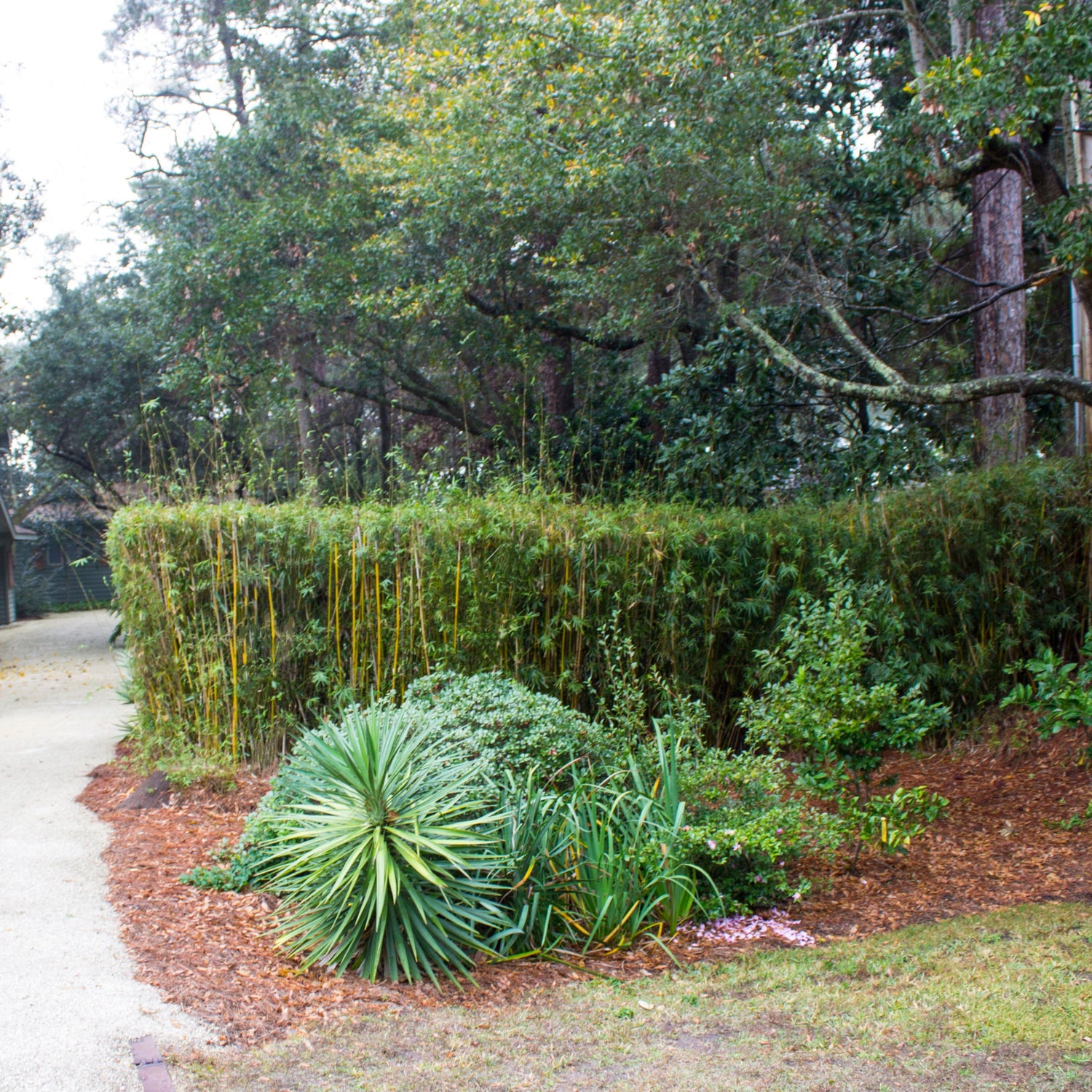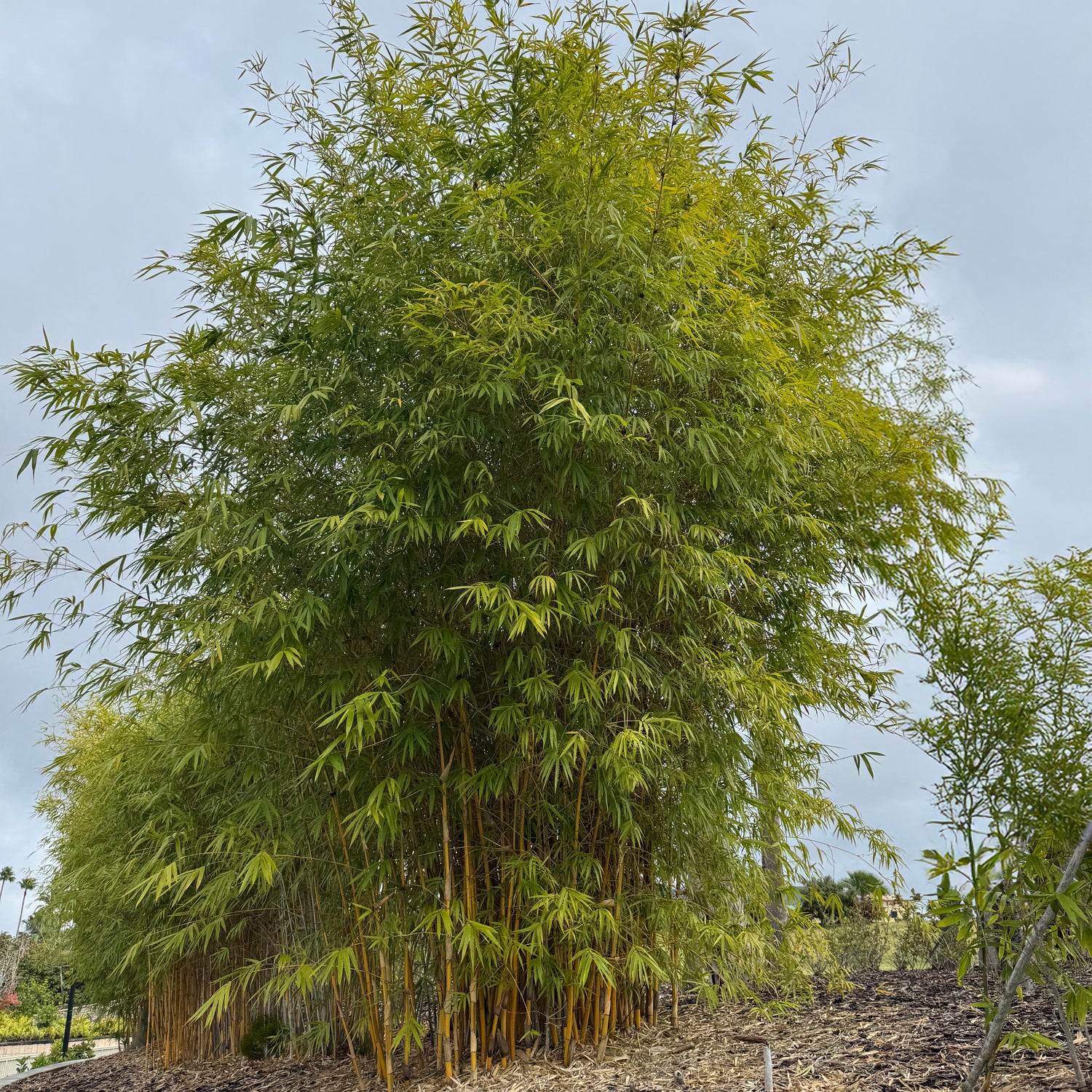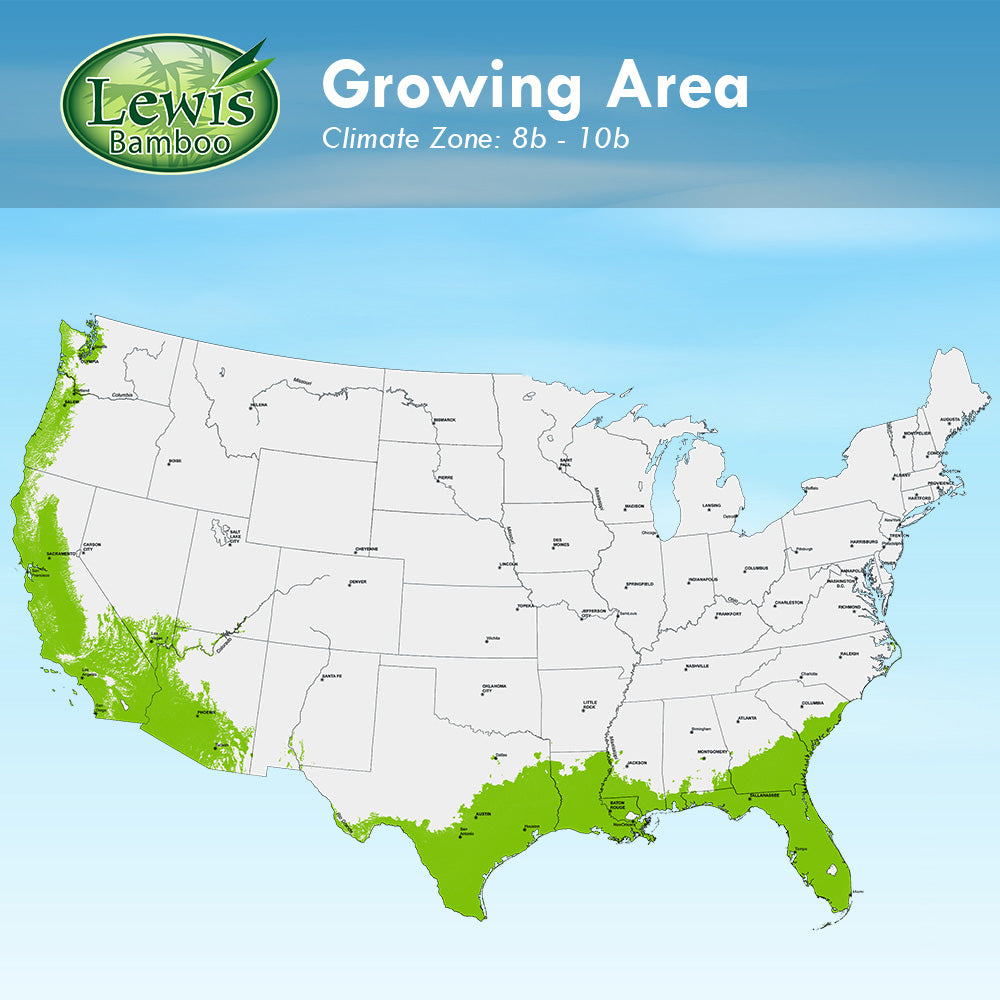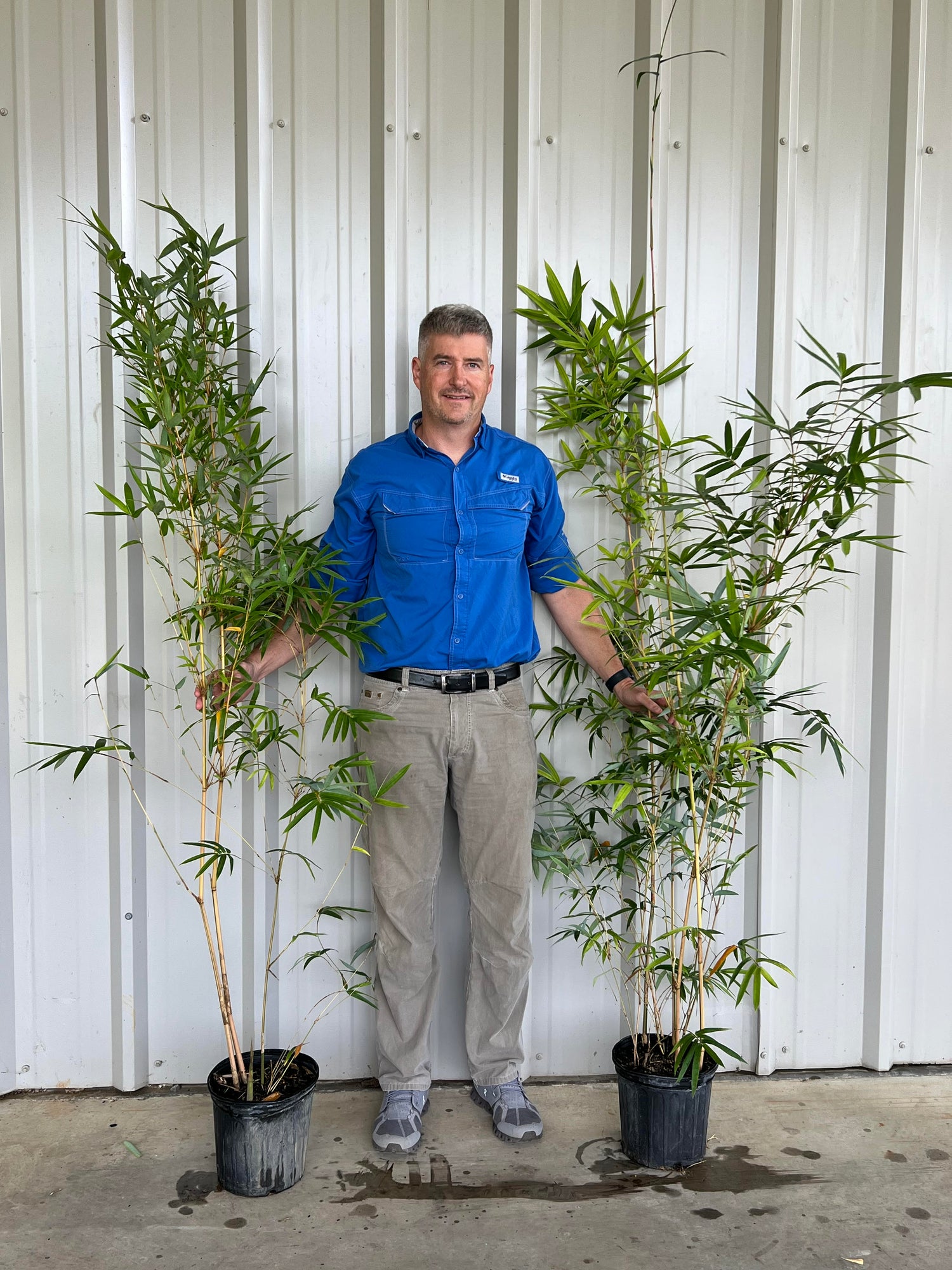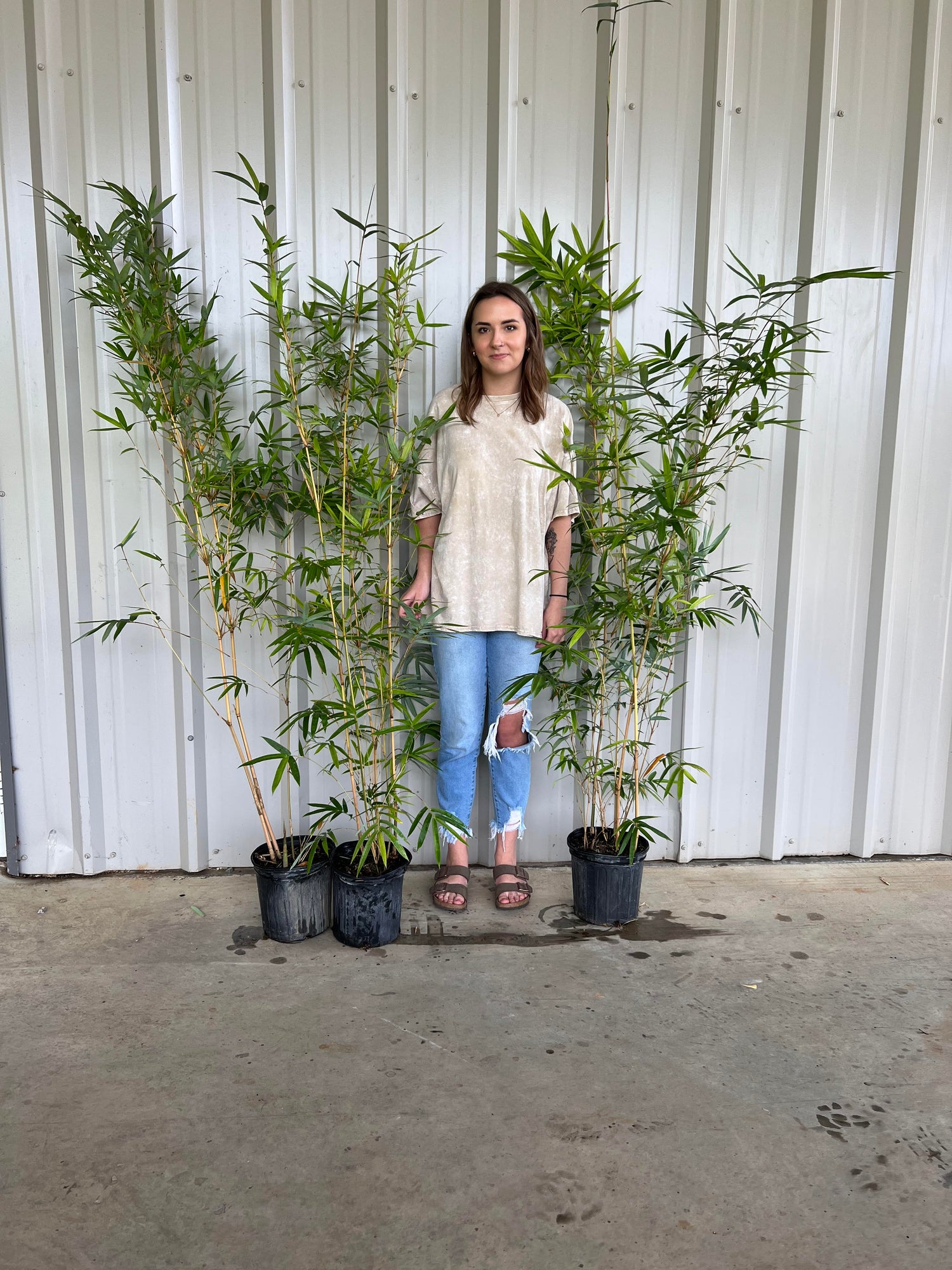Lewis Bamboo
Alphonse Karr
- Drought tolerant once established.
- Great option for narrow planting areas.
- Excellent choice for hedges and tall screens.
Couldn't load pickup availability

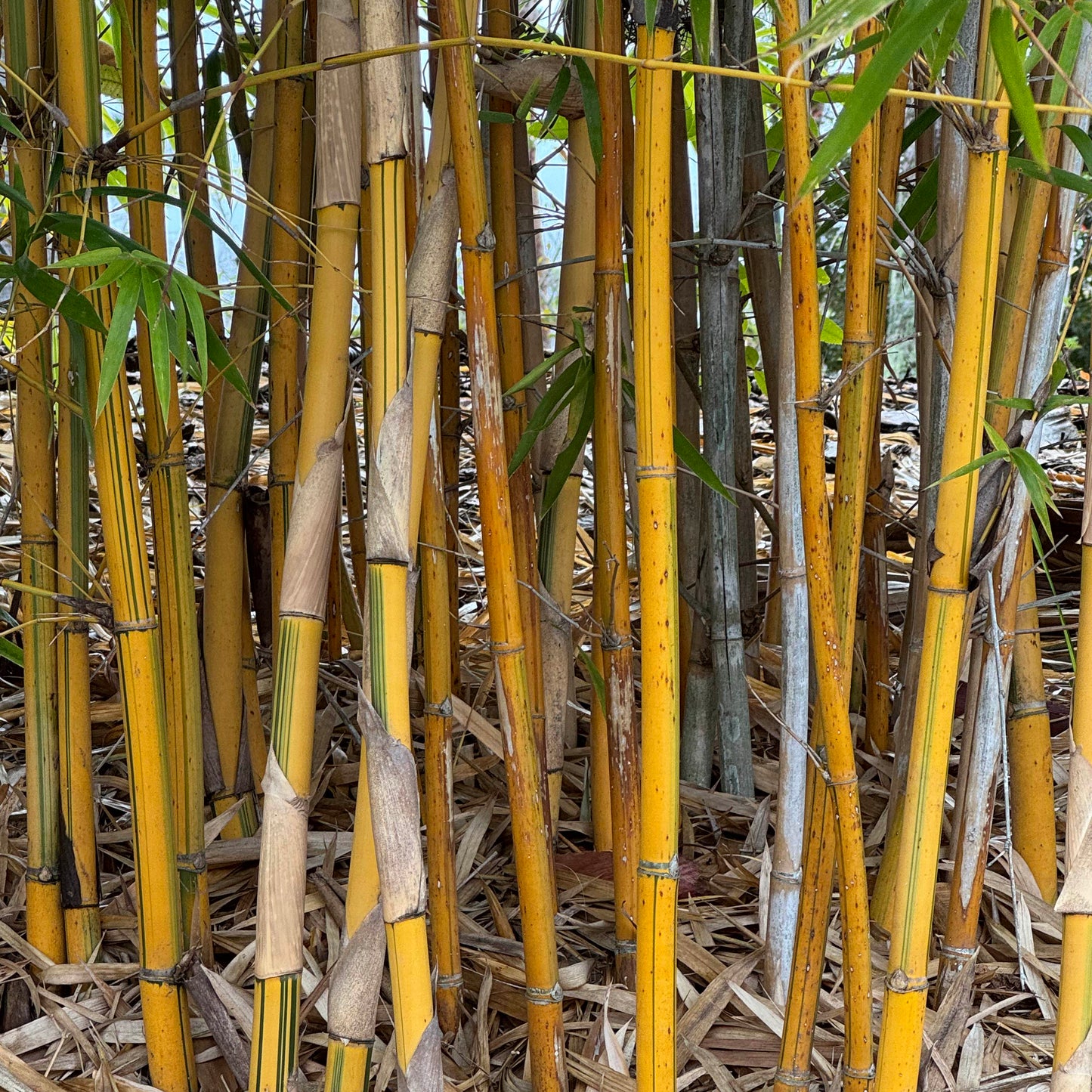
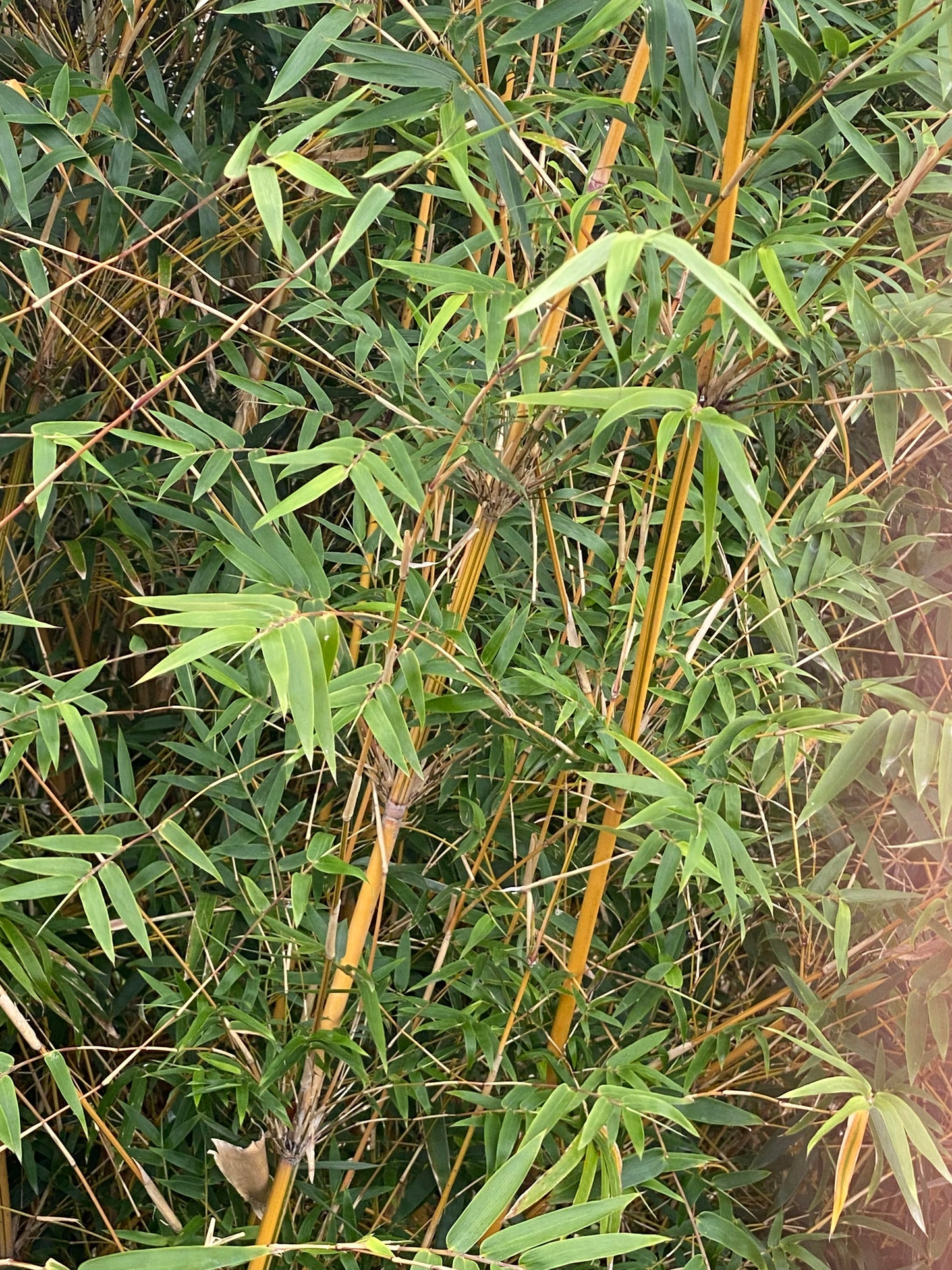
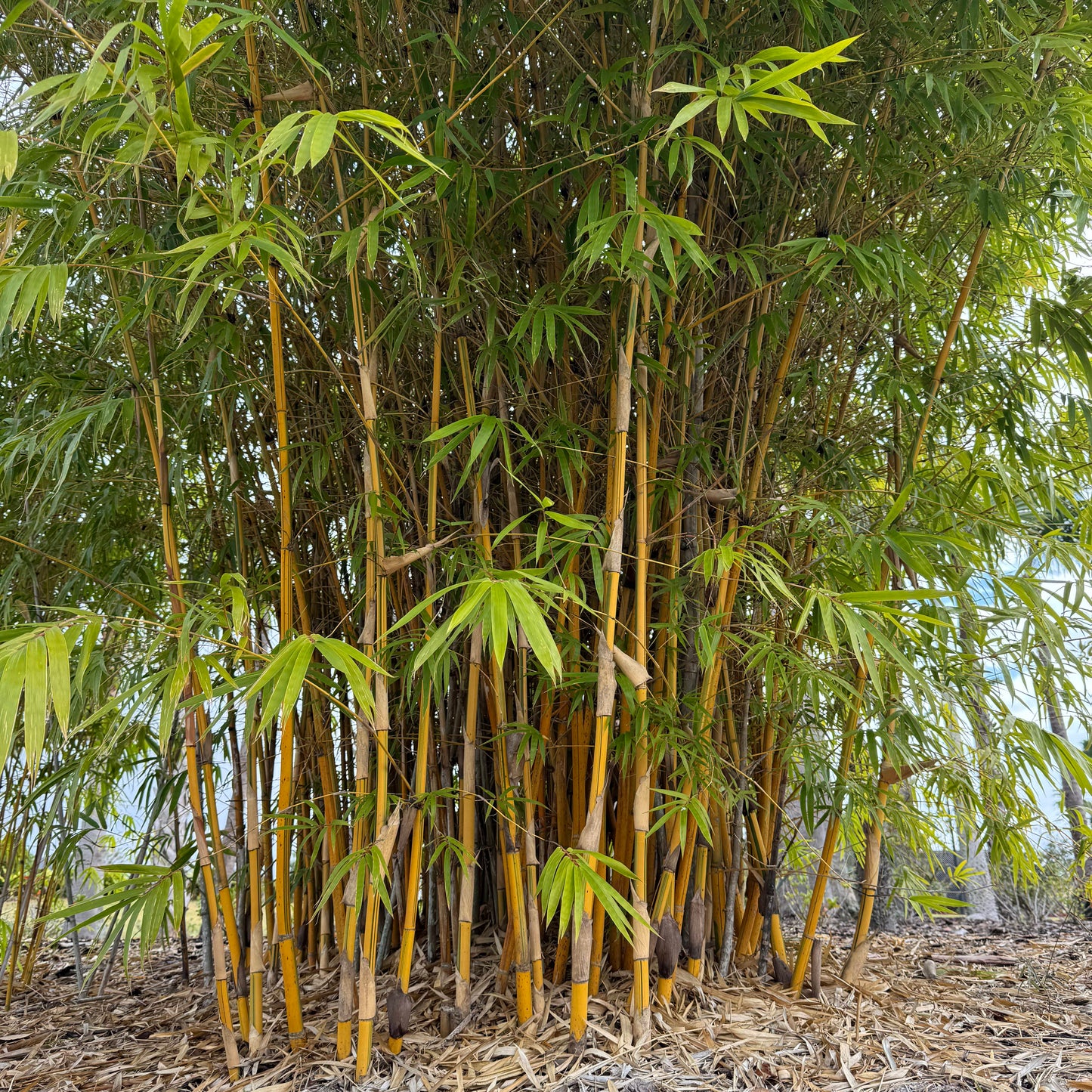
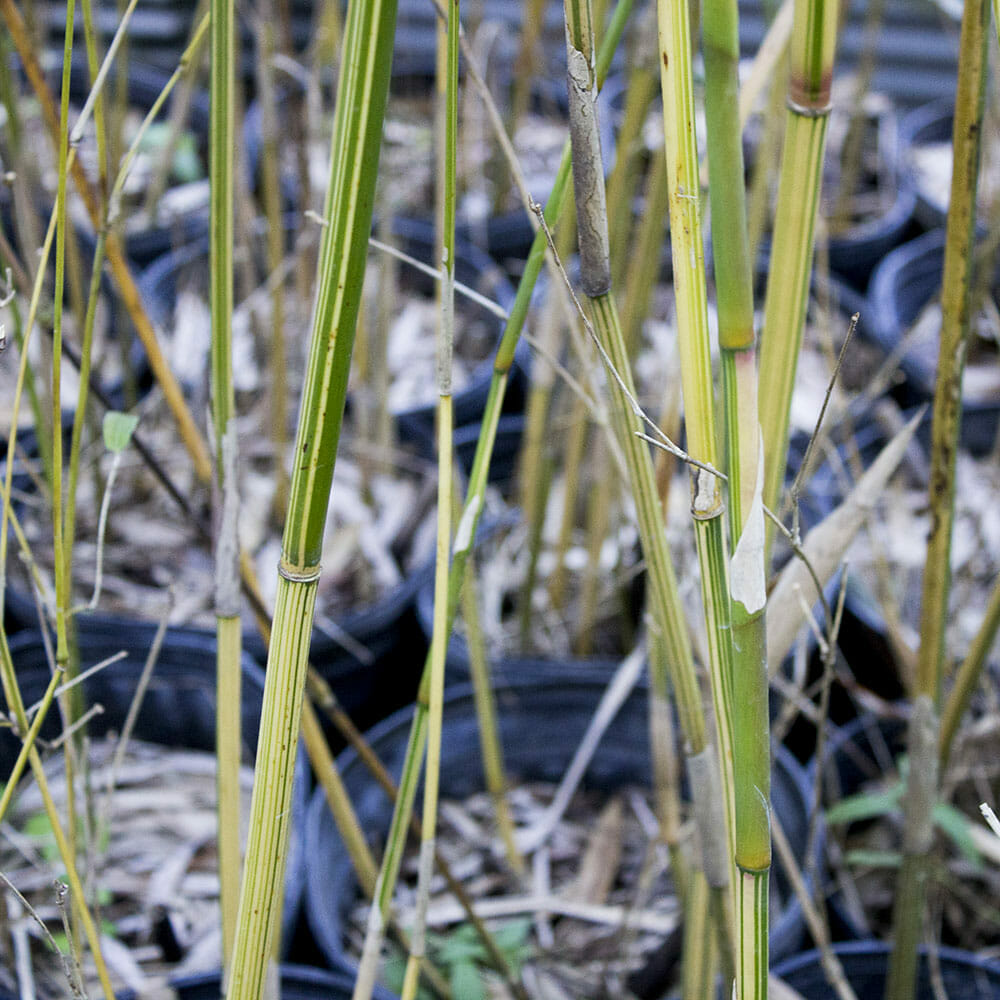
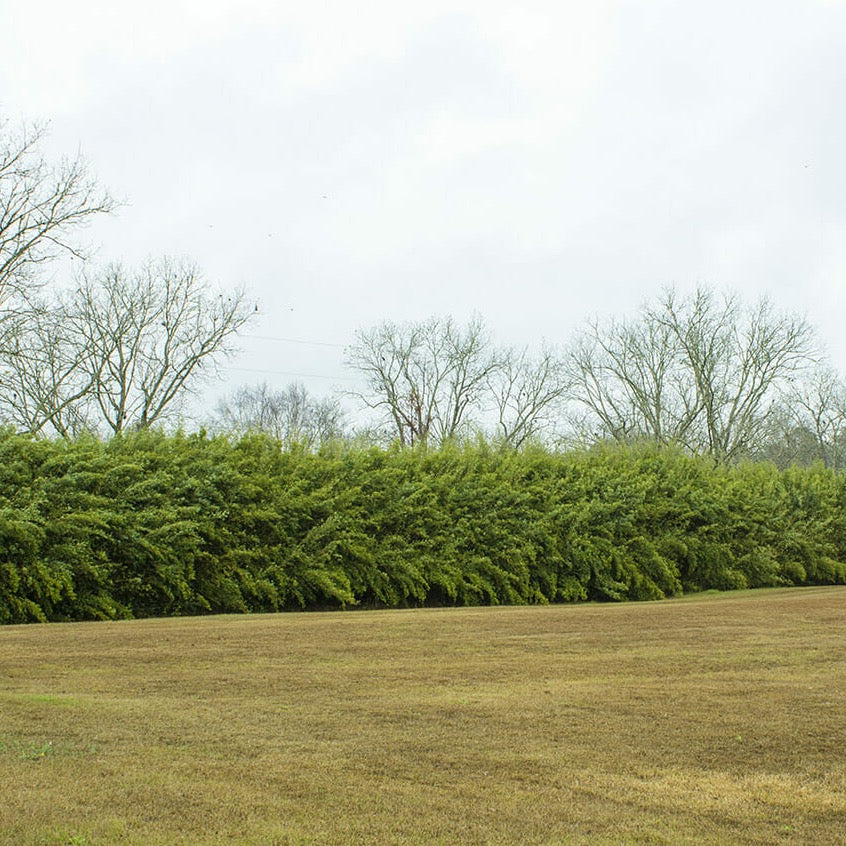
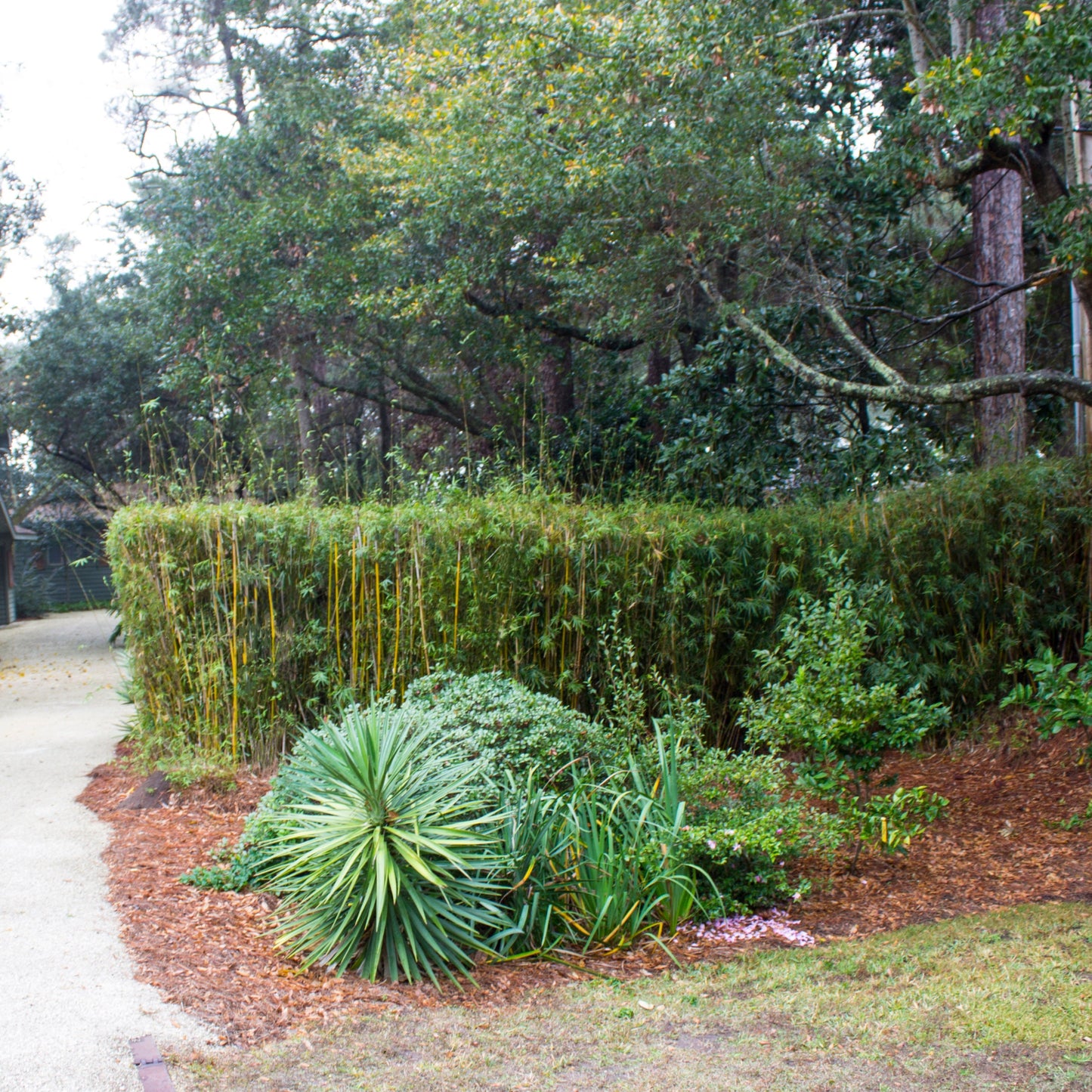
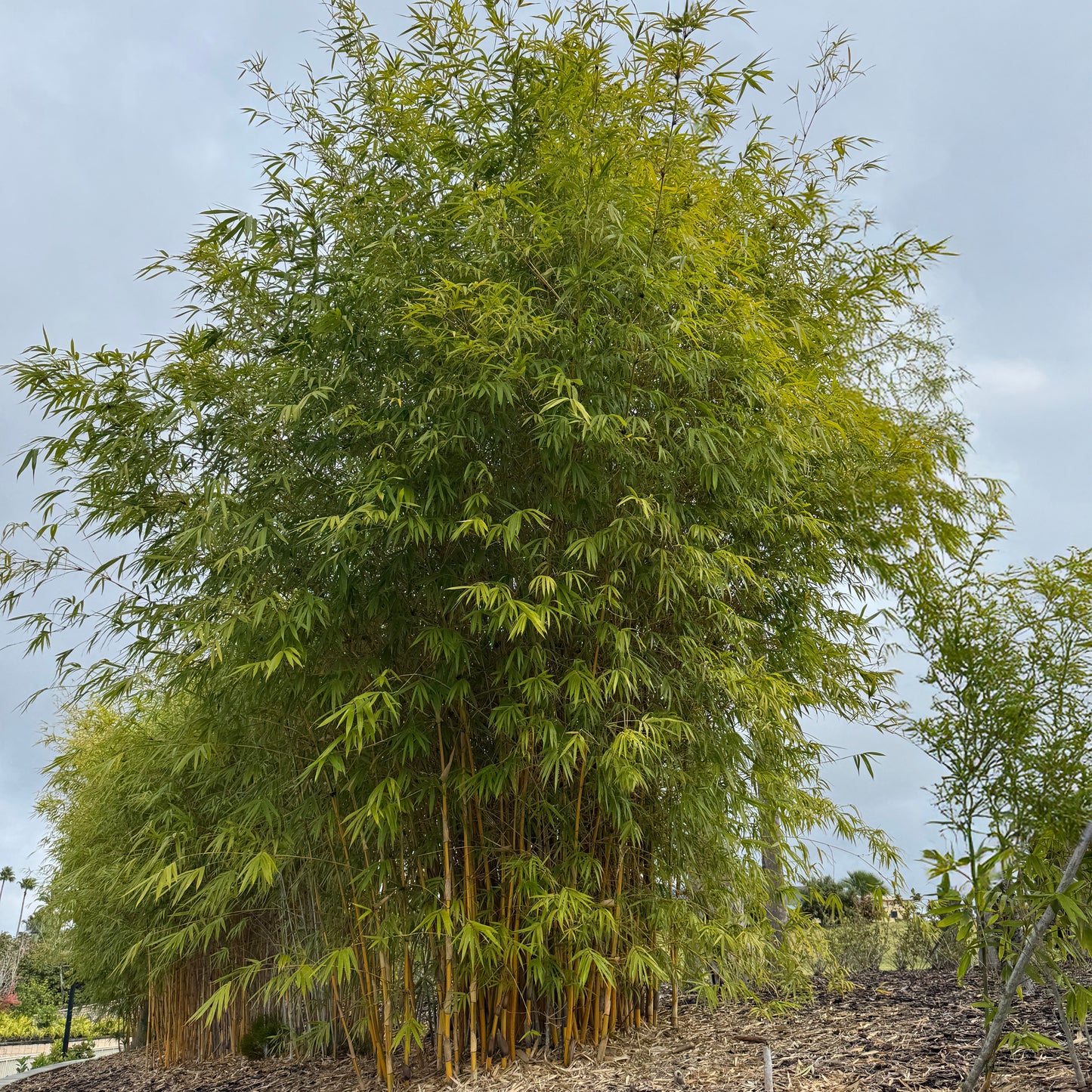
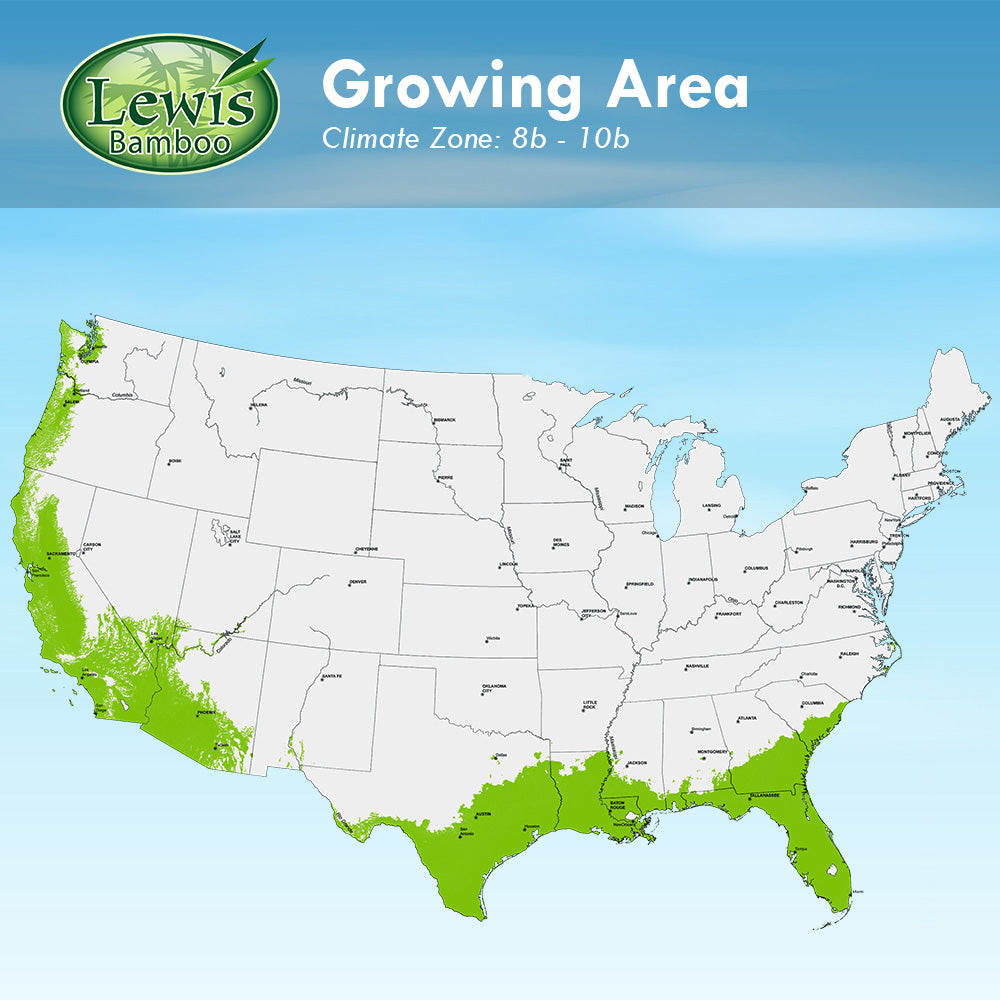
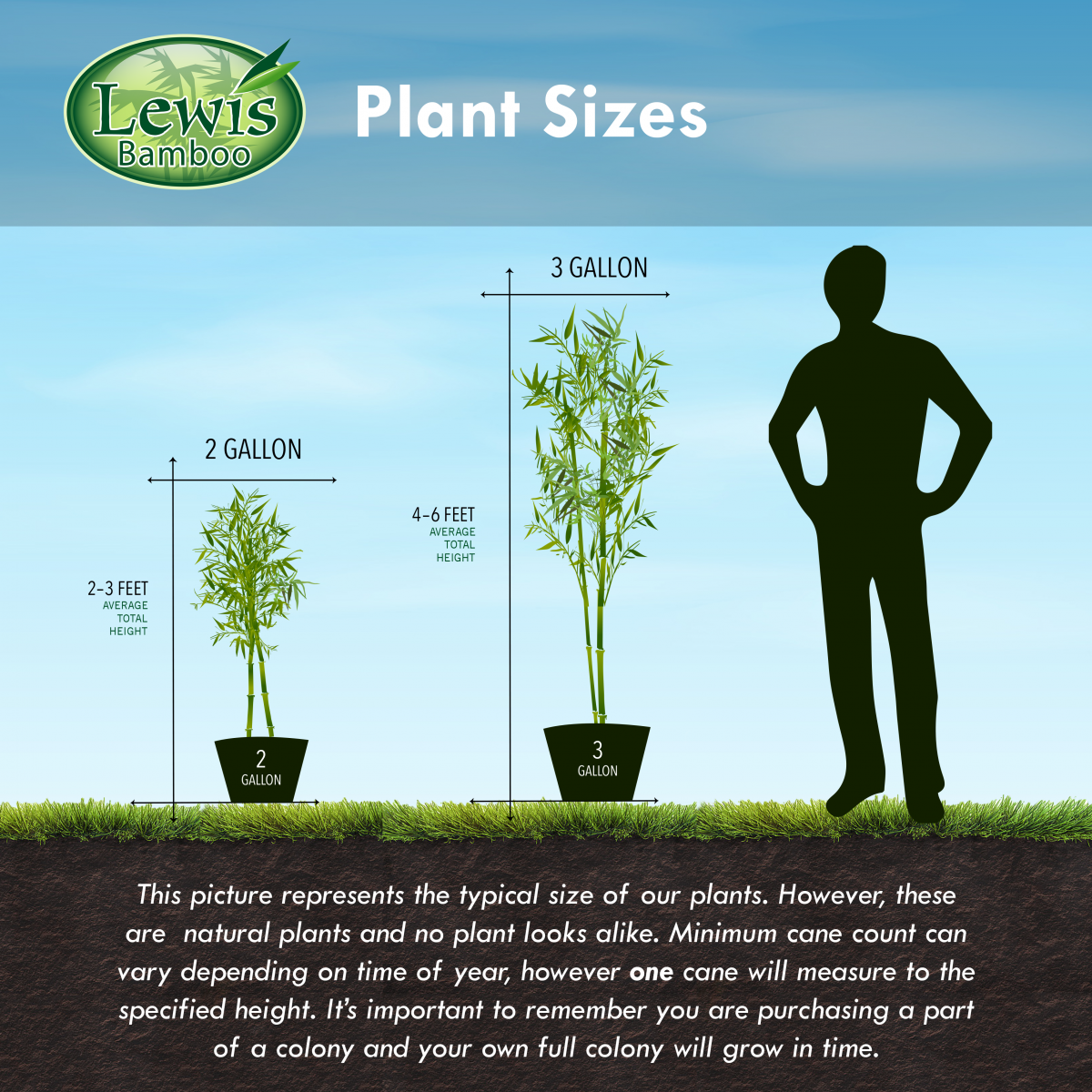
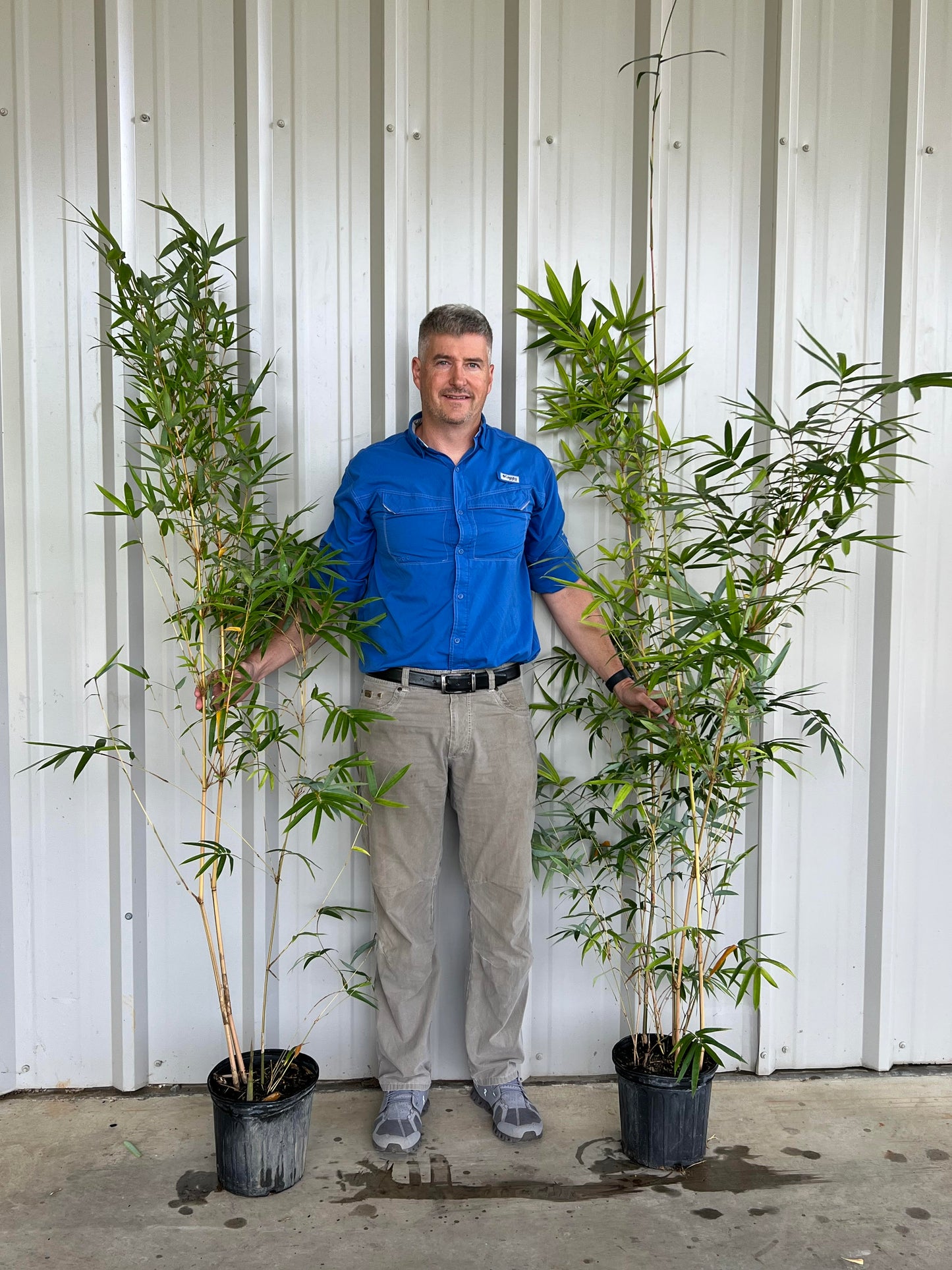

Can I grow this bamboo?
Once you enter your zip code below, we can provide recommendations just for you!
Characteristics of Bambusa multiplex 'Alphonse Karr'
The Bambusa Multiplex 'Alphonse Karr' bamboo, commonly referred to as the 'Alphonse Karr', is a strikingly beautiful clumping bamboo variety noted for its vibrant and uniquely colored culms. Native to China, this bamboo has become a favorite choice for many garden enthusiasts and landscapers around the world, particularly for those looking to add a splash of color and texture to their outdoor spaces.
Key Features:
-
Culms: What truly sets 'Alphonse Karr' apart are its distinctive culms. These are bright golden-yellow with irregular, intermittent green stripes. The color of the culms deepens to a reddish hue when exposed to direct sunlight, creating a stunning visual contrast.
-
Size: Typically, 'Alphonse Karr' reaches heights between 20 to 25 feet, with a culm diameter of about 1 inch. This moderate size makes it adaptable to various garden spaces.
-
Growth Habit: Being a clumping bamboo variety, 'Alphonse Karr' grows in dense clusters, with a non-invasive root system. This ensures that the bamboo won't spread uncontrollably, making it a great choice for urban gardens or areas where space is a concern.
-
Foliage: The leaves of the 'Alphonse Karr' bamboo are slender and vibrant green, which beautifully complement the colorful culms, adding to the plant's overall ornamental appeal.
-
Versatility: Its aesthetic appeal combined with its non-invasive growth habit makes it ideal for various landscaping uses, from privacy screens and hedges to solitary focal points in gardens.
-
Hardiness: 'Alphonse Karr' is a hardy bamboo, able to withstand temperatures as low as 18°F (-8°C). It is best suited for USDA Hardiness Zones 8 to 11.
Care and Maintenance: 'Alphonse Karr' prefers well-draining soil and benefits from regular watering, especially during its establishment phase. It thrives in full sun but can tolerate partial shade. Given its vibrant culm color, placing it in an area where it gets ample sunlight can help accentuate its beauty. Pruning can be done as necessary to shape the plant or control its height.
In conclusion, Bambusa Multiplex 'Alphonse Karr' offers both practicality and ornamental beauty, making it a highly sought-after bamboo variety. Its vibrant and uniquely colored culms can elevate any garden's aesthetic, turning it into a lively, tropical haven.
From Grove to Garden: How We Grow and Ship Bamboo at Lewis Bamboo
Take a behind-the-scenes look at how bamboo is carefully dug, containerized, watered, grown and packaged for shipment at Lewis Bamboo. Every step is handled with care to ensure healthy, ready-to-plant bamboo arrives at your door.
How Bamboo Grows
Bamboo grows a little different than most plants. The bamboo that you get initially never grows vertically again. It has babies that are taller, that has babies that are taller. Every generation should be taller that the previous year's shoots. The intriguing aspect is that each year’s growth emerges and grows to it complete height in 60-90 days. They spread as they produce larger growth, filling in and providing a screen.
This link will help you learn how bamboo grows. It will give you an idea of what kind of growth to expect from your planting. It is a lot of information, but well worth your time. How Bamboo Grows
Planting Instructions
Planting bamboo is also easy. You want to dig a hole about twice the size of the root ball. When you plant the bamboo amend your soil with composted manure and a good top soil. Bamboo can be planted at ground level or slightly deeper. It is not a picky about it conditions but this will help get it off to a good start.

More details can be found on our Planting Instruction Page
Spacing between plants
One division of bamboo will start a grove or screen over time. However, if you want a privacy screen fast, we recommend planting bamboo 3 to 5 feet apart. This will hopefully allow you to have a good screen in three years. There are a lot of factors such as water, sunlight, and climate zones that speeds up or slows down the process. Three years is about the average on this spacing, closer planting will allow you to screen or develop your grove faster. You cannot over plant bamboo.
Maintenance
Fertilizing
Bamboo can benefit from a fertilization program. You can safely fertilize your bamboo once it has been in the ground for one month. A time release fertilizer will work great. Time release fertilizers allow for proper absorption in case your soil is out of PH balance. We offer some fertilizer to help with growth. We fertilize twice a year. Once in the early spring to encourage new growth and then again during the middle of the grow season to replace any nutrients that are being depleted. Click here to see our recommended fertilizer: Our Fertilizers
Control
Over the years a lot of myths have been told about bamboo, while it can spread under good conditions, it is not as invasive as many people would have you believe. In colder climates an aggressive runner here in the south will hardy spread at all in comparison. We have been growing bamboo since 1985 and had experience with it long before that. The bamboo's underground root system (rhizome) will spread beyond the initial planting over the years, so in the next two or three years you will need to decide on some method of containment on the sides you do not want the rhizomes to run over into.
We have constructed a page discussing multiple methods of controlling bamboo. It goes over root pruning, mowing new shoots, and in ground barriers: Controlling Bamboo
All this said and it may discourage you, but as with any plant there will be maintenance. Bamboo is very beautiful and is great in a Japanese style garden, but it will need maintenance down the road. At first it may seem to be doing nothing, but after 3 to 5 years you will have a lot of beautiful culms (canes) and love the foliage. All our 150 plus species simply contained by mowing and weed eating the new Spring and Summer shoots. Hopes this helps and don't be afraid of the bamboo.

